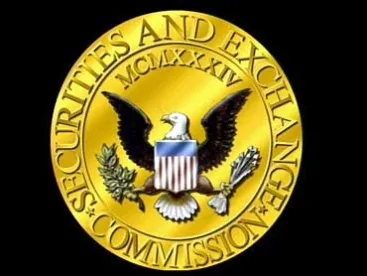Revisions to Regulation D (“Reg. D”), the major exemptive provision from the registration requirements of the Securities Act of 1933 (the “Securities Act”), has been on the Securities and Exchange Commission’s Regulatory Flexibility Agenda for some time. In a January 2023 address, SEC Commissioner Caroline A. Crenshaw floated some of the reforms the current Commission is considering.
Background
Reg. D provides certain safe harbors within the “private placement” exemption found in Section 4(a)(2) of the Securities Act. The Securities Act requires every securities offer and sale to be registered with the SEC, unless exempted. Any such offering includes disclosure of substantial company information. Reg. D, which was codified nearly 50 years after the Securities Act, permits companies to raise capital without many of the significant (and potentially onerous) disclosure requirements associated with registered, public offerings.
The original intent of Reg. D was to provide small and medium-sized businesses with access to capital without the disclosure requirements associated with registered public offerings. However, increasing use of Reg. D by major, billion-dollar operating businesses and private equity firms has prompted concern with at least one Commissioner. The use of private offerings has grown dramatically in recent years. Commissioner Crenshaw noted in her address that the growth rate of private placements had surpassed that of public offerings. A 2019 Market Review by McKinsey & Company notes that between 2002 and 2019 private equity’s net asset had grown twice as fast as global public equities. Private equity’s assets, which are only a portion of the capital generated through Reg. D, indicates the increasingly large amount of private capital available to private businesses. And, while private equity fundraising was suppressed during the COVID-19 pandemic, McKinsey’s 2022 Market Review revealed that the private markets have rebounded to 2019 levels. Commissioner Crenshaw attributes this growth to the fact that “[c]ompanies no longer need to go public to raise enormous amounts of capital.” More specifically, it is because companies no longer need to make (and be scrutinized for) the disclosures that would be mandated if registering securities for public offer and sale.
Public vs. Private
The Reg. D safe harbor permits companies to raise capital from investors without the immense disclosure requirements associated with public offerings. However, private investments are illiquid, risky, and based on limited information.
According to Commissioner Crenshaw, and supported by current market conditions, companies no longer need to go public to raise enormous amounts of capital. Therefore, this surge of private capital fundraising through Reg. D has led to recent interest from some on the Commission. Reflecting some of those concerns, Commissioner Crenshaw questioned the volume of capital being raised with relatively minor disclosure requirements, citing examples such as FTX's recent bankruptcy filing and the failures of Theranos and WeWork.
FTX, Theranos, and WeWork: Unicorn Horror Stories
When discussing the relatively limited degree of investor protections in private markets, Commissioner Crenshaw pointed to the “complete failure of corporate controls” that lead to FTX’s bankruptcy filing in 2022 (a business which, at a time, had a valuation of $32 billion).
FTX, of course, is only one example of extreme valuations and subsequent significant crashes in the private markets. Theranos was a private health care and life sciences company that was able to raise hundreds of millions in investment and achieve a $9 billion valuation. However, the business, which claimed to have developed certain revolutionary blood tests requiring small amounts of blood, was revealed to be a fraud. Contrary to company representations, Theranos repeatedly failed to develop the technology that supported its sky-high valuation. Many investors relied on little more than the word of its now-disgraced founder and CEO, Elizabeth Holmes. Holmes, according to multiple media reports, is now attempting to postpone a lengthy prison sentence after being convicted of fraud last year. Theranos ceased operations in 2018.
Another one-time darling of the private markets, WeWork (now a public company), was valued at over $47 billion. In 2019, a failed Initial Public Offering revealed significant deficiencies and questionable reporting methodologies, which came to light at least in part due to the financial disclosure requirements of Form S-1. WeWork’s valuation plummeted, to less than $10 billion.
With FTX, WeWork, and Theranos as a backdrop, Commissioner Crenshaw highlighted her concern that the private markets, as currently regulated, are leading to inflated valuations, incomplete information, illiquidity, and an environment where businesses fail to abide by the strict internal controls of their publicly traded contemporaries.
Reforms to Reg. D
Commissioner Crenshaw offered a summary of what a regulatory overhaul of Reg. D would entail.
First, Reg. D would be reformed to be brought closer in line with the disclosure requirements associated with Form S-1. This would include disclosures of an issuer’s size, assets, investors, and employees, as well as requiring disclosure of fundamental business operations, including identifying management, operational updates, and meaningful financial statements. These disclosures, along with disclosure of the purpose and usage of raised capital, would “provide basic, material information about the issuer.”
Second, a framework would be implemented where additional, heightened obligations will be placed on larger private issuers and issuances. By way of comparison, the Commissioner referenced Regulation A (“Reg. A”), which permits an exemption from registration with a two-tiered system governing disclosure. Under Reg. A, a “Tier 1” of up to $20 million in a 12-month period and a “Tier 2” offering of up to $75 million in a 12-month period, must each file an offering circular along with two years of financial statements. Additionally, Tier 2 offerings would require additional, heightened financial disclosures, which mirror the requirements of Form S-1.
Borrowing from the tiered Reg. A framework, Commissioner Crenshaw envisions a Reg. D which links disclosure requirements to the size of the company, unlike the Reg. A framework, which is based on the size of the offering. She reasons that larger companies are better positioned to comply with heightened disclosure requirements, while smaller businesses, a key driving motivation behind the Reg. D safe harbor in the first place, would continue to be burdened only with the current, looser disclosure requirements of Reg. D.
Conclusion
Reforms to Reg. D will be a major topic of discussion. With the continued growth and attention paid to “Unicorns” and the use of Reg. D by large companies seemingly intent on staying private, it appears that the Commission has reform squarely in its sights. Commissioner Crenshaw’s remarks were confined to the use of Reg. D by operating businesses, unaddressed was the significant use of Reg. D by pooled investment vehicles – hedge funds and private equity funds referred to as private investment companies relying on the Section 3(c)(1) or Section 3(c)(7) exceptions in the Investment Company Act of 1940 and the collateral consequences to those businesses of the proposed reforms. Also unaddressed, was the increasingly expensive burden of initial public offerings and the related costs of remaining a public company. While access to capital markets, both public and private, should be seen as a continuum, the current Commission has not indicated a desire to address the former.
Commissioner Crenshaw’s remarks should be seen as a trial balloon regarding the current Commission’s ideas regarding Reg. D reform -- providing greater protection for investors and more information to the public markets and regulators. Whether this leads to healthier capital markets, or private markets will simply be suppressed with little advantage to investors or the markets at large, will have to be seen if (or, likely, when) revisions are proposed and the markets respond.





 />i
/>i

